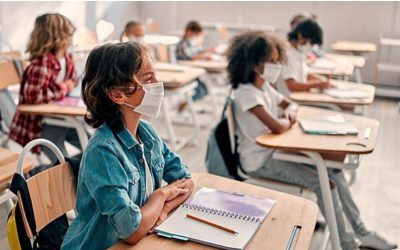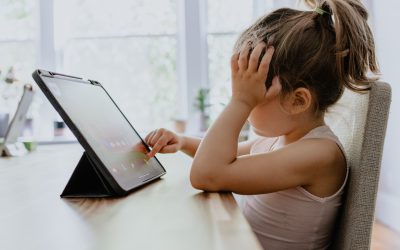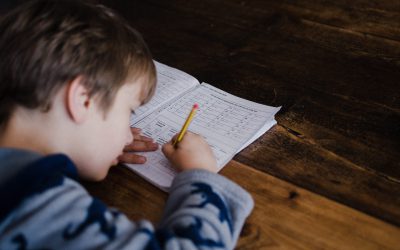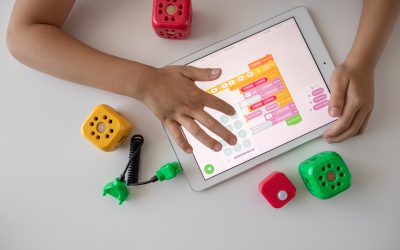How to repair learning loss from school closures during COVID-19 pandemic: which interventions and programmes are effective?
13 Jun 2020 | Professionals
How effective are these interventions and programmes to repair learning loss?
This blog offers a quick review (but by no means complete) of some of the evidence from available research.
Schools/school boards (primary/secondary) who want to participate in a study on the effectiveness of these programmes and interventions, email mail Dr. Anne Fleur Kortekaas-Rijlaarsdam: a.f.kortekaas-rijlaarsdam@vu.nl
Prof. Dr. Melanie Ehren & Rukiye Turkeli
12-06-2020


Summer school
Summer school is a school, or a programme of targeted lessons and activities (e.g. exercursions) during the summer vacation. The programme usually lasts several weeks and is often organized by a private company, hiring teachers, teaching assistants, or students to deliver the programme.
Participation in summer schools has been shown to have substantial beneficial effects on math and language skills, autonomy, self-confidence, motivation and socio-emotional competences of vulnerable children and pupils who participate in a summer program are more confident about attending high school than those who do not participate (1-5; 7-9). However, summer schools appear to be mainly effective in the short term and the effects seem to diminish quickly in the long term (4,7).
Moreover, summer schools are only effective when groups are small (5-15 students), the teaching material is intensive and challenging in order to motivate students, structured and focused on the specific skills students need support in, connected to the regular school curriculum and offering incentives for participation (e.g. a fun element, such as games, breakfast, snacks, trips) (6-10). The most effective summer schools are taught by qualified teachers who have substantive knowledge and experience in teaching at different levels (9).
Given the high teacher shortages in some countries, countries are exploring other options to organize summer schools, such as by recruiting volunteers and other professions (see example from New Mexico). Other considerations and concerns are the stigmatising of students, challenges in motivating students and their parents to participate a summer school, and the high drop-out rates of disadvantaged children (11).
Additional support during the regular school day
A second option is to invest in additional support of disadvantaged learners during the regular school day, such as when teachers or teaching assistants work with these learners in small groups or on an individual basis when others are working on activities independently. Young children benefit from additional support in their own familiar classroom environment, such as when learning is introduced as part of playful activities. Additional support is also effective for all age groups when it allows learners to revise specific content over multiple occasions, rather than having to master skills over one concentrated teaching session.
Students continue to be part of their peer group and therefore have less chance of stigmatization. Extra support during school time is cost efficient, and allows teachers to work with students over a longer period of time. Concerns are the higher workload for teachers and whether they have the appropriate skills to support disadvantaged learners and differentiate their teaching.
Extending the school day
Learning loss can also be repaired by extending one or two school days with 2 to 3 hours of teaching for students who need extra support. The additional support can be offered by teachers, teaching assistants or external volunteers/companies (e.g. students, private tutors) after regular school hours, or during lunch breaks.
According to a review study by the EEF, pupils make on average two additional months’ progress per year from extended school time and in particular through the targeted use of before and after school programmes. There is some evidence that disadvantaged pupils benefit more, making closer to three months’ additional progress. There are also often wider benefits for low-income students, such as increased attendance at school, improved behaviour, and better relationships with peers.
There are also wider benefits for disadvantaged students, such as increased attendance at school, improved behaviour, and better relationships with peers. The Dutch Council for Primary Education recommends a model of pre-teaching where additional support to disadvantaged learners is provided before the regular instruction as it allows them to fully participate in whole group instruction and group work.
Some downsides and considerations are the high workload for teachers where support needs to be structured to meet learners’ needs.
After school programmes
After school programmes offer additional time for targeted groups of pupils, particularly disadvantaged or low-attaining pupils. Such programmes are generally organized by groups of schools where learners from multiple schools join. Research suggests that such programmes can be effective when taught by qualified teachers, and structured to meet the needs of learners and when aligned to the regular curriculum. A study found that an hour of math-focused tutoring led to substantially higher test scores in mathematics, particularly when the programme was offered in small groups (2 students per tutor) (13).
After school programmes tend to be costly, recruiting qualified tutors is often challenging or poses a high workload for regular teachers. Older children, particularly from disadvantaged backgrounds also tend to lack motivation to participate.
One to one tuition
A review study of the Education Endowment Foundation (EEF) and Sutton Trust indicates that one to one tuition is effective, but expensive. According to EEF, one to one tuition (duration of 6-12 weeks) delivered by trained teachers results in approximately five additional months progress on average (14), compared to three months progress when delivered by college students (15). One to one tuition by teaching assistants or volunteers can have a valuable impact, but tends to be less effective.
Improving the quality of teaching
Improving the quality of teaching overall has a long-term effect, such as when investing in further professional development of teachers and developing curriculum materials to support disadvantaged students.
The EEF teaching learning toolkit shows that especially ‘good feedback’ and improving reading comprehension are effective. In addition, improving students’ self-regulated learning is important as it allows them to think about their own learning more explicitly and develop strategies that allow them to learn independently, which is particularly relevant when schools have to close again in case of a second outbreak (17).
Blended learning
‘Blended learning’ is a well-thought out integration of online and face- to- face learning experiences[5]. Blended learning is particularly effective when online and face to face teaching and learning is integrated, well-structured and learner-oriented [6]. Blended learning is therefore more than simply combining education at home and at school and requires an investment in the skills of teachers to combine in-school teaching with remote teaching at home, students’ and teachers’ availability of/access to hardware and software (online teaching packages and remedial and complementary materials, access to high speed internet, laptops etc) (see our previous blog).
Strengthen home-school relations
The association between parental engagement and a child’s academic success is well established, however, it is unclear which approaches are particularly effective. The EEF provides an overview of strategies, such as continuous communication via SMS, strengthening language and IT skills, supporting parents in reading at home and guiding their children in doing homework.
An extension of the school year where the summer holiday is shortened and the length of the school is adjusted. Research suggests that the effect is relatively small.
For more information about interventions and strategies, see also:
https://educationendowmentfoundation.org.uk/evidence-summaries/teaching-learning-toolkit/
An overall conclusion is that the specific strategies developed to recover learning loss should vary depending on whether the school closures took place at the end of the school year or at the beginning of the school year. In countries where the school year was ending there is more likely to be information on what students had learned up to the point of the closures and this information can be used to decide on relevant interventions. Options also vary according to availability of teachers and their capacity where countries with high teacher shortages will for example struggle to provide extra support during school hours.
Literature
- Borman GD, Dowling NM. Longitudinal Achievement Effects of Multiyear Summer School: Evidence from The Teach Baltimore Randomized Field Trial. Educational Evaluation and Policy Analysis. 2006; 28 (1), 25-48.
- Cooper H, Charlton K, Valentine JC, Muhlenbruck L. Making the most of summer school: a meta analytic and narrative review. Monograph of the Society for Research in Child Development 65. 2000; 1-118
- Faber SE, Timmerman MC, Kievitsbosch AF. De zomerschool: een effectieve interventie tegen zittenblijven. Groningen: Rijksuniversiteit. Groningen. 2014. Available from: https://www.zomerscholenvo.nl/wp-content/uploads/sites/5/2015/08/Rapport-onderzoek-Zomerscholen-RUG.pdf Accessed 10th June, 2020.
- Haelermans C, Ghysels J, Monfrance M, Rud I, Groot W. (2017). Procesvaluatie lentescholen en effectanalyse lente- en zomerscholen 2016. Maastricht: Top Institute for Evidence-based Education Research (TIER), Universiteit Maastricht. 2018. Available from: https://www.zomerscholenvo.nl/deelname-aan-zomerschool-verkleint-kans-op-zittenblijven-2/ . Accessed 10th June 2020.
- Lauer P, Akiba M, Wilkerson S, Apthorp H, Snow D, Mya MG. Out-of-School-Time Programs: A Meta-Analysis of Effects for At-Risk Students. Review of Educational Research. 2006; 76, 275-313.
- Mariano, Louis T, Martorell P, Berglund T. The Effects of Grade Retention on High School Outcomes: Evidence from New York City Schools. Santa Monica, CA: RAND Corporation, 2018. Available from: https://www.rand.org/pubs/working_papers/WR1259.html. Accessed 10th June 2020.
- Sharp, C. Can summer schools improve outcomes for disadvantaged pupils? National Foundation for Educational Research. 2018.
- McCombs, Sloan J, Pane J, Augustine CH, Schwartz HL, Martorell P, Zakaras L, Ready for Fall? Near-Term Effects of Voluntary Summer Learning Programs on Low-Income Students’ Learning Opportunities and Outcomes. Santa Monica, CA: RAND Corporation. 2014. Available from: https://www.rand.org/pubs/research_reports/RR815.html. Accessed 10th June 2020.
- Schwartz, Heather L, McCombs JS, Augustine CH, Leschitz JT. Getting to Work on Summer Learning: Recommended Practices for Success, 2nd Ed. Santa Monica, CA: RAND Corporation. 2018. Available from: https://www.rand.org/pubs/research_reports/RR366-1.html. Accessed 10th June 2020.
- Rapportage SOEM-zomerschool Amsterdam Zuidoost. 2019.
- Education Policy Institute. Preventing the disadvantage gap from increasing during and after the Covid-19 pandemic. Available from: https://epi.org.uk/publications-and-research/disadvantage-gap-covid-19/ Accessed 11th June, 2020.
- Dunlosky J, Rawson KA, Marsh EJ, Nathan MJ, Willingham DT. Improving Students’ Learning With Effective Learning Techniques: Promising Directions From Cognitive and Educational Psychology, Psychological Science in the Public Interest. 2013; 14, 4–58
- Cook, Philip J, et al. “Not too late: Improving academic outcomes for disadvantaged youth.” Institute for Policy Research. Northwestern University Working Paper. 2015; WP-15-01. Available from: https://scholar.harvard.edu/files/fryer/files/not_too_late._improving_academic_outcomes_for_disadvantaged_youth_2015.pdf Accessed 10th June, 2020.
- https://committees.parliament.uk/event/1118/formal-meeting-oral-evidence-session/
- Torgerson C, et al. “Tutor Trust: affordable primary tuition. Evaluation report and executive summary.” 2018.
- The Sutton Trust. Sutton Trust response to the Education Select Committee’s inquiry into the impact of Covid-19 on children’s services and education. Available from: https://www.suttontrust.com/wp-content/uploads/2020/06/200531-Sutton-Trust-response-to-Education-Select-Committee-inquiry-into-Covid-19-impact.pdf. Accessed 11th June 2020.
- Huizinga M, Smidts D. Gedrag in uitvoering. 1 ed. Nieuwezijds B.V., Uitgeverij; 2017.
See also information for:
Most recent blogs:
How LEARN! supports primary and secondary schools in mapping social-emotional functioning and well-being for the school scan of the National Education Program
Jun 28, 2021
Extra support, catch-up programmes, learning delays, these have now become common terms in...
Conference ‘Increasing educational opportunities in the wake of Covid-19’
Jun 21, 2021
Covid-19 has an enormous impact on education. This has led to an increased interest in how recent...
Educational opportunities in the wake of COVID-19: webinars now available on Youtube
Jun 17, 2021
On the 9th of June LEARN! and Educationlab organized an online conference about...
Homeschooling during the COVID-19 pandemic: Parental experiences, risk and resilience
Apr 1, 2021
Lockdown measures and school closures due to the COVID-19 pandemic meant that families with...
Catch-up and support programmes in primary and secondary education
Mar 1, 2021
The Ministry of Education, Culture and Science (OCW) provides funding in three application rounds...
Home education with adaptive practice software: gains instead of losses?
Jan 26, 2021
As schools all over Europe remain shuttered for the second time this winter because of the Covid...





